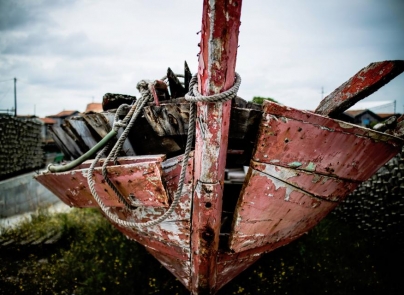Thomas Cranmer and the Book of Common Prayer

Thomas Cranmer is often remembered for his last dramatic hours of this life. After signing four documents of submission to papal authority and two statements of recantation of his previous beliefs, he shocked his large complacent audience by turning his last repentance speech into a repudiation of “all such bills and papers which I have written or signed with my hand since my degradation.” Before being rushed to the pyre, he was able to shout, “forasmuch as my hand offended, writing contrary to my heart, my hand shall first be punished there-for!”
Cranmer kept his promise of “punishing” his hand by thrusting it into the heart of the fire. He then ended with the prayer pronounced by Stephen in Acts 7, “Lord Jesus, receive my spirit … I see the heavens open and Jesus standing at the right hand of God.”
Cranmer’s Life – in a Nutshell
Born on 2 July 1489 in a traditional Roman Catholic family, Cranmer was prepared for a clerical profession. After achieving his MA in 1515, however, he unexpectedly hindered his career by getting married. His marriage was short-lived. His wife Joan died in childbirth, together with the baby she was carrying, and Cranmer was ordained priest and admitted into the fellowship of Jesus College.
His participation in a diplomatic mission brought him to the attention of Henry VIII, who granted him a half-hour interview and gave him rings of gold and silver. His correspondence with the king continued while Cranmer kept busy with university administration until, in 1529, Henry consulted him over his desire to annul his royal marriage to Katherine of Aragon. By that time, the king had already cast his eyes on Anne Boleyn.
Cranmer produced arguments for the annulment by conducting a thorough research in primary sources, proving that the king - not the pope - had supreme jurisdiction over all matters concerning his kingdom. Quite speedily (Henry had already secretly married Anne, who was pregnant), the king arranged Cranmer’s consecration as Archbishop of Canterbury on March 30, 1533, allowing him to preside over the annulment trial. On May 23, Henry’s first marriage was annulled. Five days later, his marriage with Anne was validated. Anne’s baby, Elizabeth, was born in September.
Cranmer’s research led him to question papal authority and to engage with Protestant reformers, first by mail and then in person. In 1532, during a visit to Germany, he married a young woman named Margaret, daughter of a German theologian. He then continued to follow the writings of the continental Reformers, which Henry approved only selectively. For example, Henry remained faithful to the traditional Roman Catholic theology of the mass and issued a conservative Act of Six Articles which, among other things, reaffirmed clerical celibacy, forcing Margaret Cranmer (who had at least one daughter by this time) to flee the country.
In spite of this, Cranmer stayed by the king’s side, backing some of his decisions and opposing others (such as the execution of Anne Boleyn in 1536, that of Thomas Cromwell in 1540, and an act “for the advancement of true religion” which restricted the reading of the Bible to persons of a higher social status).
Things changed dramatically in 1547, when Henry died, leaving the throne to his young son Edward VI, under the supervision of Lord Protector Edward Seymour. From the start, Seymour and Cranmer planned a radical break with the medieval church, which Cranmer inaugurated by acknowledging his marriage and growing a beard (an outward gesture used by many reformers to show their distinction from medieval clergy). To consolidate the budding English reformation, Cranmer invited to England continental reformers, starting with Peter Martyr Vermigli and Bernardino Ochino. Martin Bucer followed in 1549.
Cranmer’s efforts ended abruptly when Edward VI died of a sudden illness and the Roman Catholic Mary Tudor rose to the throne, bringing back the Latin Mass, the rituals, and some forms of monasticism.
Mary’s persecution of Protestants, however, worked against her. Her large number of executions, even of people who had supported her ascent to the throne, eroded much of the popularity she had enjoyed as daughter of Henry VIII. Besides, the many people who were compelled to find refuge in Protestant countries became further strengthened in their convictions by the sample of Reformed liturgy and life they were able to experience. After Mary’s death and Elizabeth’s coronation, they returned with a new vision for a radical transformation of their country.
Cranmer was one of Mary’s victims. Arrested and imprisoned on September 14, 1553, he was tried and condemned for treason on November 13, together with Jane Grey (who had ruled for nine days after Edward’s death), her husband Guildford Dudley, and Guildford’s brothers Henry and Ambrose.
After the failure of Sir Thomas Wyatt's rebellion in February 1554, Cranmer was temporarily joined in prison by Nicholas Ridley, John Bradford, and Hugh Latimer, but was soon separated from them. His final condition of isolation weakened him considerably, leading to the recantation he later renounced.
The Book of Common Prayer
Cranmer's greatest achievement, the Book of Common Prayer, was issued in March 1549. It included a new liturgy in English, as opposed to the old liturgy in Latin. It was also much simpler than the old Roman Catholic missal, giving prominence to the reading of Scriptures, and restoring the Lord’s Supper to a distribution of both bread and wine to the laity. By emphasizing prayer, praise, and study, he was hoping to bring a greater knowledge of God and His Word to a people who were used to delegating those activities to the clergy.
The prayer book was not unopposed. It provoked much resistance of both traditionalists and radicals (such as John Hooper, who refused for a time to wear any religious vestments, and John Knox, who opposed the practice of kneeling during the Lord’s Supper). The English people was also not completely on board, because changes are always disconcerting. Compromises had to be made (for example, Cranmer issued a “black rubric” to be inserted in each book to reassure the people that kneeling during the Lord’s Supper didn’t mean worshiping the elements).
Ultimately, even Cranmer was not completely happy with the result, especially after his old colleague Stephen Gardiner told him that the book could very well be used in support of Roman Catholic theology. The 1552 version was closer to what was done and taught in Geneva and Zurich, but this edition lasted only eight months, because Mary I outlawed it.
Re-introduced in 1559, with some modifications, by Elizabeth I, the book became mandatory. Once again, opposition continued, especially from Puritans who wanted a purer form of worship. Thomas Cartwright called it “an unperfect book, culled and picked out of that Popish dunghill.” This went along with the Puritan hostility toward the vestments, images, and choirs that Elizabeth had kept in the Church of England.
Many Scots were also horrified to discover that their King James VI liked this “middle way,” as opposed to the simple and somber worship instituted by the Scottish Reformers. He also liked the hierarchy of the Church of England, which affirmed the king as head of the church. Things worsened as he became king of Great Britain, uniting the kingdoms of England and Scotland.
These feelings of discontent culminated in the English Civil War, as the Puritans fought for a last chance to purge their churches of popish superstitions. In Scotland, riots started when King Charles I tried to impose a version of the Book of Common Prayer (closer to the 1549 version). Most famous is the rebellion of a congregation who attacked a preaching bishop with a bombardment of Bibles and even a wooden stool. The opposition escalated to the point that a bishop conducted his service while holding a pair of loaded pistols. Finally, in February 1638, a group of Scottish nobles, clergy and gentry signed the National Covenant, promising to defend the Scottish kirk against impositions of liturgy or vestments by the crown.
Even in England, the Book of Common Prayer was replaced for some time by a Book of Common Order (similar to what the church in Scotland used). Ultimately, after a long time of discussions, reworkings, and compromises, the church produced the 1662 version which is still used today. Obviously imperfect, as every human document will always be, this version is still at the heart of Anglican worship and contains some of the most beautiful prayers ever expressed. Even non-believers have praised it as a masterful literary work, which has deeply influenced the English language and thought.





